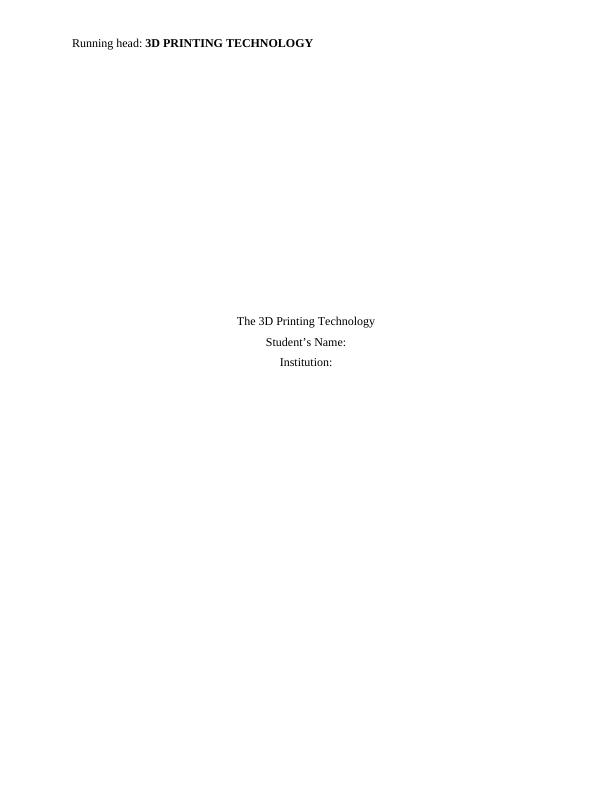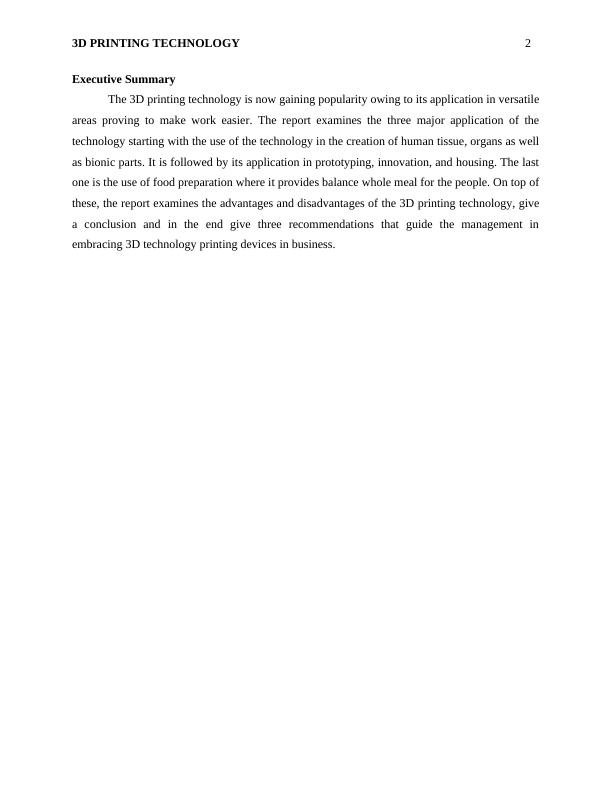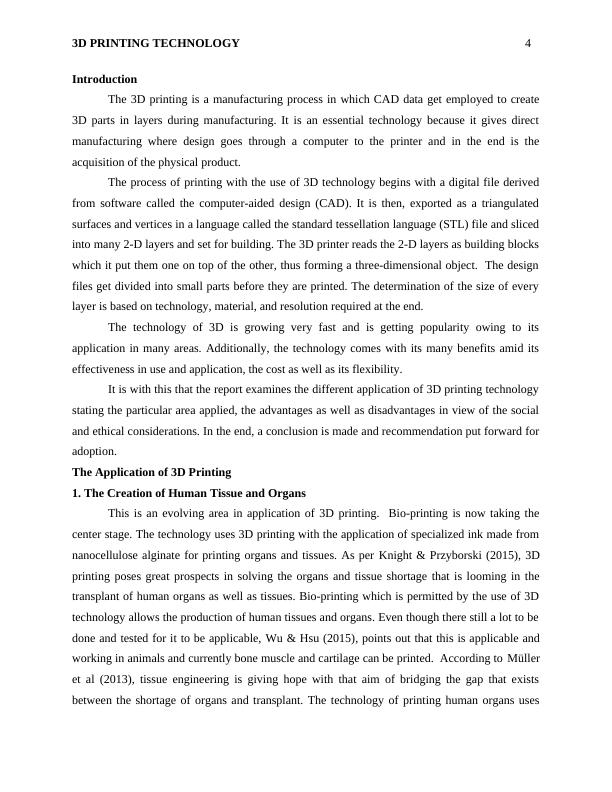The 3D Printing Technology: Applications, Advantages, and Disadvantages
This assignment is designed to develop a portfolio of resources that you can use during your degree.
12 Pages3652 Words378 Views
Added on 2023-06-12
About This Document
This report explores the applications, advantages, and disadvantages of 3D printing technology. It covers the use of 3D printing in creating human tissue, prototyping, housing, and food preparation. The report also discusses the benefits of customization, rapid prototyping, and reduced production costs, as well as the drawbacks of high energy consumption and expensive equipment.
The 3D Printing Technology: Applications, Advantages, and Disadvantages
This assignment is designed to develop a portfolio of resources that you can use during your degree.
Added on 2023-06-12
ShareRelated Documents
End of preview
Want to access all the pages? Upload your documents or become a member.
3D PRINTER About 3D printer and its working 3D printing
|17
|5709
|186
Discover the World of 3D Printing: A Comprehensive Guide to 3D Printer Technology
|17
|5748
|60
Technology Management Milestone (pdf)
|7
|2114
|52
3D Printing Technology: Applications, Advantages and Disadvantages
|19
|4143
|209
3D Printing: Definition, Operation and Applications
|8
|1633
|378
An Overview on 3D Printing Technology (PDF)
|14
|3536
|32




